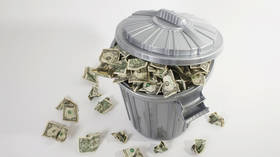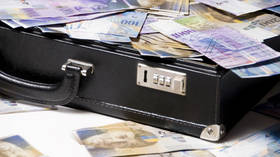Global crude prices dropped for the week ending Sunday for the first time this year. The slide came amid reports of a US-Russia summit on Ukraine and hopes of reaching a nuclear agreement with Iran. Both Russia and Iran are major global energy suppliers.
However, the price drop was short-lived as global benchmark Brent crude gained on Monday to trade above $93 per barrel by 10:00 GMT, while West Texas Intermediate (WTI) was trading around $91 per barrel.
Both benchmarks reached multiple-year highs last week amid fears of possible supply constraints due to Russia-Ukraine tensions. Western nations have threatened Moscow, which has been conducting military exercises near the Ukrainian border, with sanctions if it attacks its neighbor. Russia has denied planning any such actions. In the most recent development, Russian President Vladimir Putin and US President Joe Biden on Sunday agreed “in principle” to hold a summit to discuss the situation in the coming days. The oil market reacted to the news swiftly, with both benchmarks trading in the red before recovering on Monday.
The oil rally started to subside late last week, following reports that a US-Iranian deal to revive the 2015 nuclear agreement, also known as the JCPOA (Joint Comprehensive Plan of Action), was close to being agreed upon. A senior EU official said on Friday that the deal is expected “in the coming two weeks or so,” but that success depended on the political will of the negotiating parties, as cited by Reuters.
On Sunday, Iranian lawmakers announced six conditions for the revival of the agreement in a letter to President Ebrahim Raisi. The letter stated, among other things, that the deal may come through if all sanctions on Iran are lifted and if Washington guarantees to introduce no more sanctions or other punitive steps against Tehran in the future, news agency IRNA reported. Iranian Foreign Minister Hossein Amirabdollahian said on Saturday that a statement by the leaders of the US Senate and House of Representatives to back the nuclear deal would be a sufficient “political guarantee.”
Media reports state that some steps regarding the deal have already been reached – Iran has to stop all nuclear enrichment above 5% purity and release political prisoners, then JCPOA members must unfreeze Iran’s assets.
If Iran goes through with the deal, the global market could gain a large influx of crude from the second half of 2022 onwards, experts say, which would calm worries of crude supply shortages.
For more stories on economy finance visit RT’s business section
Article source: https://www.rt.com/business/550029-iran-deal-outweighs-ukraine-worries/?utm_source=rss&utm_medium=rss&utm_campaign=RSS







